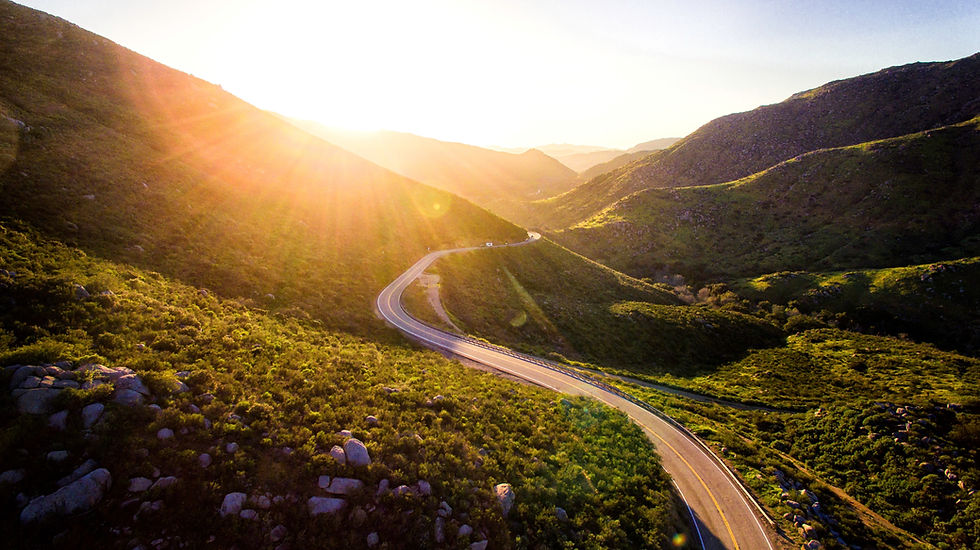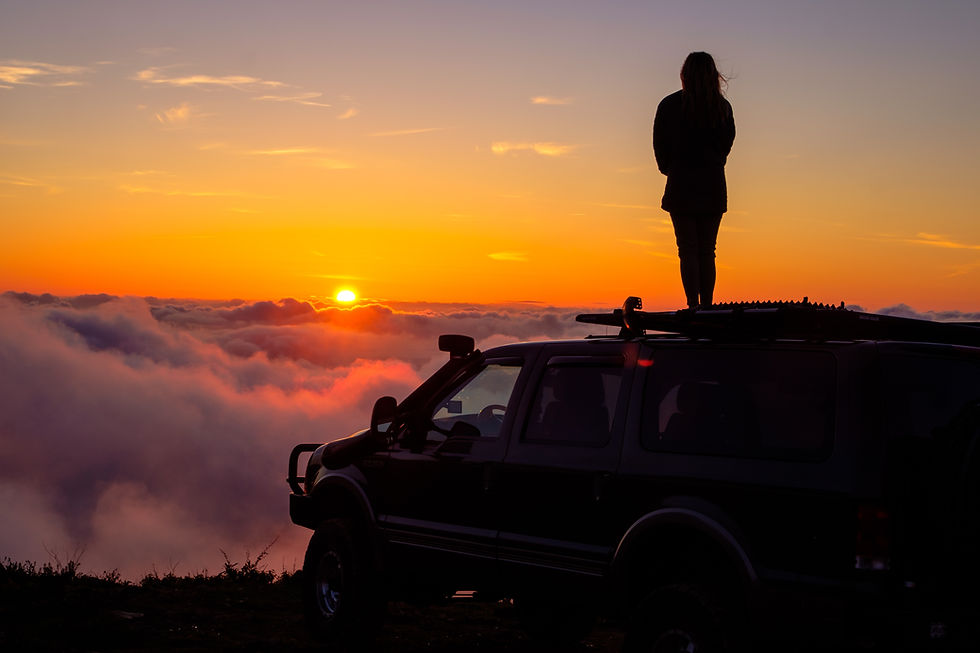The Ultimate Guide to Overlanding: Explore the World - Off the Beaten Path
- Asem Alsaadi
- May 2, 2023
- 4 min read

Introduction
Overlanding has been gaining a lot of popularity among adventure enthusiasts and those seeking to explore the world off the beaten path. This thrilling experience combines off-road travel, camping, and exploration, giving you the chance to reconnect with nature and discover lesser-known destinations. In this ultimate guide to overlanding, we will cover everything you need to know to plan, equip, and embark on your overland adventure! From selecting the right vehicle to packing essential gear, you'll be well-prepared to unleash your inner explorer and embark on the road trip of a lifetime!
What is Overlanding?
Overlanding is a form of self-reliant, long-distance adventure travel that typically involves off-road vehicles, camping, and exploration of remote locations. The journey is the destination, with an emphasis on the experience rather than the final endpoint. Overlanding can take place in various environments, from deserts and mountains to forests and beaches, and can last from a few days to several months or even years.
1. Planning Your Overland Journey

A successful overlanding adventure starts with thorough planning. Consider the following factors when planning your trip:
A) Route and destination:
Research the area you wish to explore and choose a route that suits your preferences, experience, and vehicle capabilities. Consider factors such as road conditions, terrain, climate, and any potential hazards or restrictions.
B) Duration:
Determine the length of your trip, taking into account your available time, budget, and desired pace of travel. Be realistic about the distance you can cover each day and plan for rest days and contingencies.
C) Legal and safety requirements:
Familiarize yourself with the laws and regulations of the provinces, states and overall countries you'll be traveling through. Obtain any necessary permits, visas, or insurance, and ensure your vehicle is compliant with local requirements.
D) Language and cultural considerations:
Learning some basic phrases in the local language can enhance your experience and help you navigate unfamiliar situations. Be respectful of local customs and traditions to minimize any potential conflicts or misunderstandings.
E) The environment:
Plan to leave little to no trace behind and always think of the environment when choosing products and how you will transport and dispose of them.
2. Choosing the Right Overlanding Vehicle

Selecting the right vehicle is crucial for a successful overlanding adventure. When choosing a vehicle, consider the following:
A. Capability:
Your vehicle should be able to handle the terrain and conditions you'll encounter on your journey. Four-wheel drive, high ground clearance, and off-road tires are essential for most overlanding adventures.
B. Reliability:
Choose a vehicle with a proven track record for reliability and durability. You'll want something that can withstand the rigors of long-distance travel and off-road conditions.
C. Capacity:
Ensure your vehicle can comfortably accommodate your passengers and gear. Consider factors such as seating, cargo space, and towing capacity.
D. Modifiability:
Look for a vehicle with a strong aftermarket support community, making it easier to find parts and accessories for upgrades and repairs.
Popular overlanding vehicles include the Toyota Land Cruiser, Jeep Wrangler, Land Rover Defender, Ford F-150 and various models of pickup trucks and SUV’s with camper shells. More recently, modified EV vehicles with extended range have been gaining popularity with adventurists as well.
3. Essential Overlanding Gear

Properly equipping your vehicle is crucial for a safe and enjoyable overlanding experience. The following is a list of essential gear items to consider:
A) Navigation tools:
Equip yourself with detailed maps, a GPS device, and a reliable compass. Carry backup power sources and offline maps in case of device failure or limited connectivity.
B) Camping equipment:
Invest in a durable tent or rooftop tent, sleeping bags, sleeping pads, and camp chairs. A compact camping stove, cookware, and utensils are essential for preparing meals.
C) Vehicle recovery gear:
Pack recovery equipment such as a winch, tow straps, shackles, and traction boards for getting unstuck in challenging terrain. A high-lift jack and a sturdy shovel are also useful tools for vehicle recovery.
D) Tools and spare parts:
Carry a comprehensive tool kit and spare parts for common vehicle issues, such as belts, hoses, and filters. Include a tire repair kit, an air compressor, and a portable jump starter for emergencies.
E) Communications and safety equipment:
Equip your vehicle with a CB radio or satellite phone for emergency communication. Pack a well-stocked first-aid kit, fire extinguishers, and signalling devices, such as flares or a high-visibility vest.
F) Clothing and personal items:
Pack appropriate clothing for the expected weather conditions, including moisture-wicking layers, rain gear, and sturdy footwear. Don't forget personal items such as toiletries, prescription medications, and important documents.
4. Tips and Tricks for a Successful Overlanding Experience

A) Practice Leave No Trace principles:
Respect the environment by minimizing your impact on the places you visit. Dispose of waste properly, avoid disturbing wildlife, and leave natural and cultural features undisturbed.
B) Learn local customs and etiquette:
Familiarize yourself with the customs, language, and etiquette of the places you visit. This will help foster positive interactions with local communities and minimize misunderstandings.
C) Embrace flexibility:
Be prepared to adapt to unexpected situations, such as weather, road conditions, or vehicle breakdowns. A flexible mindset will enable you to make the most of your overlanding adventure, even when things don't go according to plan.
D) Develop self-reliance:
Overlanding often involves traveling through remote areas with limited access to services. Cultivate a self-reliant attitude by learning essential skills such as vehicle maintenance, navigation, and wilderness first aid.
E) Connect with fellow overlanders:
Join overlanding clubs, forums, and social media groups to share experiences, advice, and camaraderie. Networking with other overlanders can provide valuable insights and enhance your journey.
Conclusion
Overlanding is a truly transformative experience that allows you to explore the world beyond the confines of traditional tourism. By planning carefully, selecting the right vehicle and gear, and adopting a flexible and self-reliant mindset, you'll be well-prepared for the adventure of a lifetime. Embrace the unknown and let the open road guide you on an unforgettable journey through the world's most spectacular landscapes and cultures.
Get your vehicle upfitted for maximum adventure.
Contact service@gowrenchauto.com to get a quote on up fitting your vehicle for overlanding, off-roading and camping!


